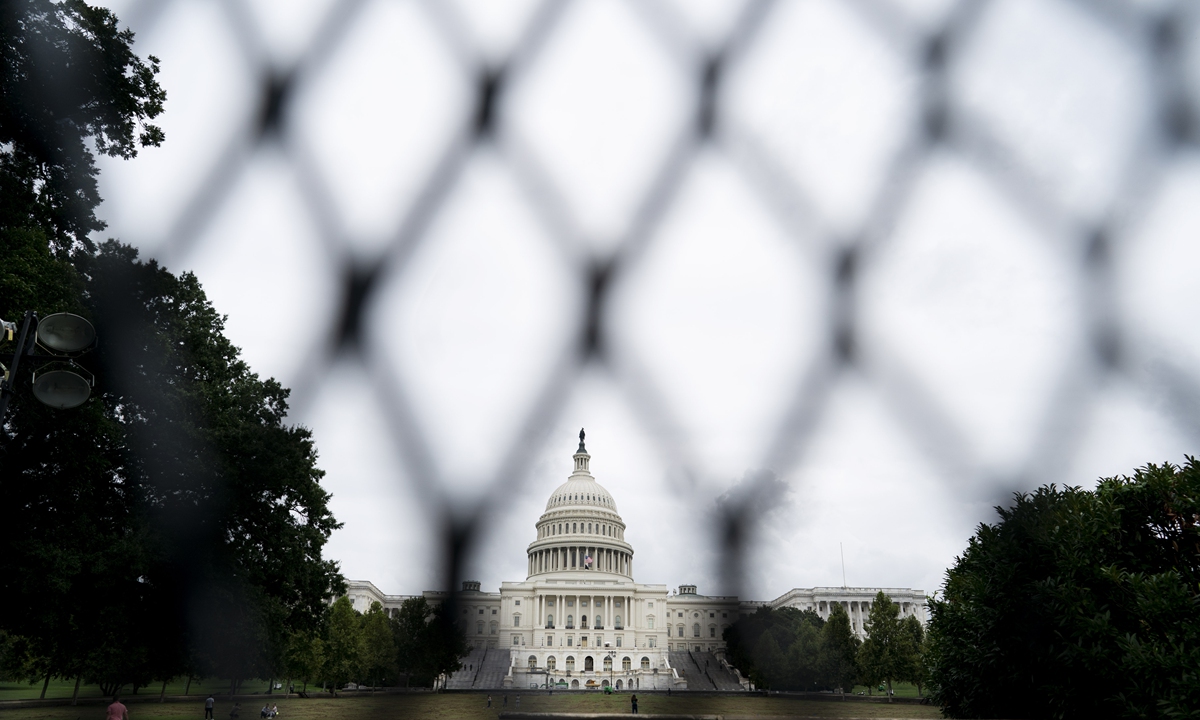Selling and buying property in a period of change
As the economy continues its slow recovery, Feng Shui practitioners are embracing the dragon when it comes to the property outlook in the coming year.
“For followers of Feng Shui, the anticipation of Period Nine‘s arrival has held a mystical allure, brimming with excitement and adventure. Finally, it is here yet there is fear and thoughts among the Feng Shui enthusiasts; particularly concerning its effects on individuals,” Feng Shui master Joe Choo said.
She pointed out that understanding the essence of Period Nine allows individuals to tap into its benefits with less worry and adapt to potential changes more effectively.
Period Nine spans from 2024 to 2043, Choo explained. It is a segment within Feng Shui that holds influence on energy shift patterns. The period is characterised by the fire element, symbolising expansion, transformation and passion.
“During this period, it is expected to usher in an emphasis on innovation, growth and breakthrough across various aspects of life, including technology, culture and social structures. Aligning spaces and activities with the energies of period 9 is believed to amplify opportunities and foster progress,” she said.
According to Choo, period 9 is associated with Li Gua (fire), and as such its location aligns with the South. This positioning indicates a more favourable economic trend in the southern geographical region, poised for significant development during Period 9.
“For individuals seeking to tap into this energy, adherence to basic Feng Shui principles might suffice instead of relocating homes,” Choo pointed out.
From the perspective of property ownership, there are two groups of buyers; homeowners and investors. Their Feng Shui differs depending on their needs.
“Homeowners are advised to select properties with ideal landform which is Feng Shui compliant, aligning main entrances that is commensurate with the year of birth of the eldest earning male of the family,” Choo said.
“Kitchen and master bedroom should be in the ideal sectors based on the year of birth of the mistress of the house, then the rooms for other occupants should be based on their year of birth,” she added.
She pointed out that investors, on the other hand, are encouraged to consider properties in the southern regions of various areas, and anticipate extraordinary economic performance in the next two decades. For example, the southern region of Penang Region is Bayan Lepas, Batu Maung, Teluk Kumbar and nearby pockets. In Peninsular Malaysia, eyes should turn to Johor.
“For business owners to have a prosperous year, you may apply 2024’s auspicious colours in offices or shops that attract positive events. Additionally, you may place living plants if the entrances of offices or shops are in the Southeast, which is the governing planet… to sail through the year smoothly,” Choo said.
“In terms of Feng Shui, each sector has a wealth area and you may place living plants, water features or crystals at the general area of the office or shop to further enhance the business,” she added.
To do this, business owners should identify the main entrance of their place of business, before they identify its wealth sector from the table. Turn the general area of the business into a square shape before standing at the centre of the space with a compass to identify the main entrance and wealth area.
Main entrances and their wealth sectors
| Main Entrance | Wealth Area | Crystals |
| North | Southeast(127.5° - 142.5°) | White/Green Phantom |
| Northeast | Southwest(217.5° - 232.5°) | Citrine/Amethysts |
| East | South(187.5° - 202.5°) | Rose Quartz |
| Southeast | North(7.5° - 22.5°) | White |
| South | East(97.5° - 112.5°) | White/Green Phantom |
| Southwest | Northeast(37.5° - 52.5°) | Citrine/Amethysts |
| West | Northwest(307.5° - 322.5°) | Amethysts |
| Northwest | West(277.5° - 292.5°) | Amethysts |
Source: Joe Choo
If you are planning to buy a property in 2024, it is beneficial to consider Feng Shui factors in order to harness the positive energy while living there, Choo pointed out.
“It is simply observing the landforms, for example, avoid having rivers, seas, ponds or big monsoon drains at the back of the house,” she said.
The decision to buy a property is ultimately based on need and financial means, Feng Shui master Stephen Chin added.
He agreed that as with Feng Shui principles, one should first consider the terrain surrounding the site. Alongside water bodies, he noted that one should consider the mountains, hills, roads and highways.
“The most basic rule of thumb is to choose a property that has a higher back and a lower front. This applies to both high-rises and landed property. I co-wrote a series of articles some time ago with Professor Master David Koh that covered the Klang Valley and explained this principle of landform Feng Shui,” Chin said.
Once the area and orientation of the property are shortlisted, Chin explained that homeowners need to ensure that the main entrance to the property is compatible with the master of the house.
“It is based on the male because it is Yang energy being introduced into the house. To determine this, calculate the Gua or Kua (personal energy) of each occupant - there are plenty of free online Gua calculators out there, so I'm not going to give out any formula!” he said.
From the Gua, one can determine if they are a West or East group person. All West group people have Northwest, West, Southwest and Northeast as their good sectors. North, East, Southeast and South are good for East group people.
“To determine the door's location, stand in the centre of the house with a compass and after aligning the needle, look and see where the main door is located. That needs to be in the good sector of the master of the house. The kitchen and master bedroom should be in the good sector of the lady of the house. The other bedrooms should be matched to the respective occupants,” Chin said.
However, he pointed out that there are a few other things to consider, and one should engage a qualified consultant for ease of mind.
Choo added that homebuyers are also encouraged to avoid properties which have a T-junction, convex of the road or a higher land mass in front of the house, such as hospitals, shopping malls, schools, high-tension cable and others.
Knowing the sector of governing planets and Three-Killers of 2024, it is advisable to avoid buying the property having the main entrance located in the South and the Southeast.
“It may be difficult for buyers who are living in condominiums or apartments because there is only one entrance, so you may place a pot of living at the sector mentioned above to prevent negative events from taking place,” Choo added.
Landed properties with two entrances offer more flexibility, allowing buyers to choose an entrance away from the southeast or south to avoid potential issues.
“After studying the external factors, matching the year of birth of the occupants with the main entrance, kitchen, bedrooms and others is very important to create harmonious energy,” Choo said.
The eye of the beholder
When asked how homeowners should decorate their homes this year, Chin pointed out that they should decorate it any way they wish. “If you want to create a festive mood, go big!” he exclaimed.
While he noted that interior design was not strictly related to Feng Shui, the Chinese are big on symbolism, therefore it's natural to decorate the house with auspicious objects.
He pointed to anything that symbolises good fortune, wealth, prosperity, longevity, productivity and creativity, as many of these came from Chinese myths and legends. Some symbols are newer inventions, such as the money ship, or the cat with a waving paw.
Chin noted that the cat was the Maneki-Neko from Japanese folklore, with several versions of the story.
“According to our calculations, the dominant element in 2024 is Yang Fire. Hence, the auspicious colours for the year are light red, light brown or yellow, and light green. These are, respectively, representative of the elements of Fire, Earth and Wood,” he said.
Homeowners can decorate their house or give it a splash of new paint using these colours. However, Chin pointed out that the mileage may vary.
“Every person has his or her own unique set of colour requirements based on the life profile, also known as the eight Character Stem-Root or Bazi. If your colour requirements match these colours, then they are especially good for you. If not, they may not be as good or may even cause some bumps along the road ahead,” he said.
He noted that it would likely be a good year for the property market as the element of Fire produces Earth.
“There should be an uptick in earth-related industries which include real estate development and management, construction, civil engineering, and agriculture. The year 2024 is also likely to see a spurt of economic growth and development,” he said.
“However, this is likely to be temporary. One should make hay while the sun shines, but must not overcommit,” he added.
Tips to sell property
In the dynamic and competitive property market, selling can be challenging. For the Year of the Dragon, Feng Shui master Joe Choo offers a few tips for home sellers to expedite the process.
“Applying auspicious colours of 2024 to attract potential buyers to walk into the property. The auspicious colours of 2024 are light red, pink, orange, yellow, green and turquoise green. You don’t need to repaint the property with such colours, you may apply them on the curtain, carpet or rugs, decorative items and others to enhance the luck,” she pointed out.
According to Feng Shui principles, the governing planet in 2024 is the Southeast sector and the Three-Killers is in the South.
Choo pointed out that if a property has its main entrance in either the Southeast or South sector, it is advisable to place living plants in the living hall and kitchen to improve the luck of selling the property.
If the property has a Southeast-facing main entrance, owners are encouraged to place living plants in the West sector, from 262.5° to 277.5°. If the property has a South-facing main entrance, owners are encouraged to place living plants in the Southwest sector, from 202.5° to 217.5°.
“To find out the position of the plants for the living hall and kitchen, you may square up the place and stand at the centre with a compass to identify the sector mentioned above,” Choo said.
While more could be done to enhance the selling potential of a property, Choo noted that it would involve a much more complicated process. The tips she offered were simple and cost-effective.

Some of its principles could be compared to architectural principles, feng shui master Joe Choo said.
Stay ahead of the crowd and enjoy fresh insights on real estate, property development, and lifestyle trends when you subscribe to our newsletter and follow us on social media
By Yanika Liew
News about Penang Properties Still Hot
Related posts:
Make the right money moves: investing in a property is still best
By CHERMAINE POO


























